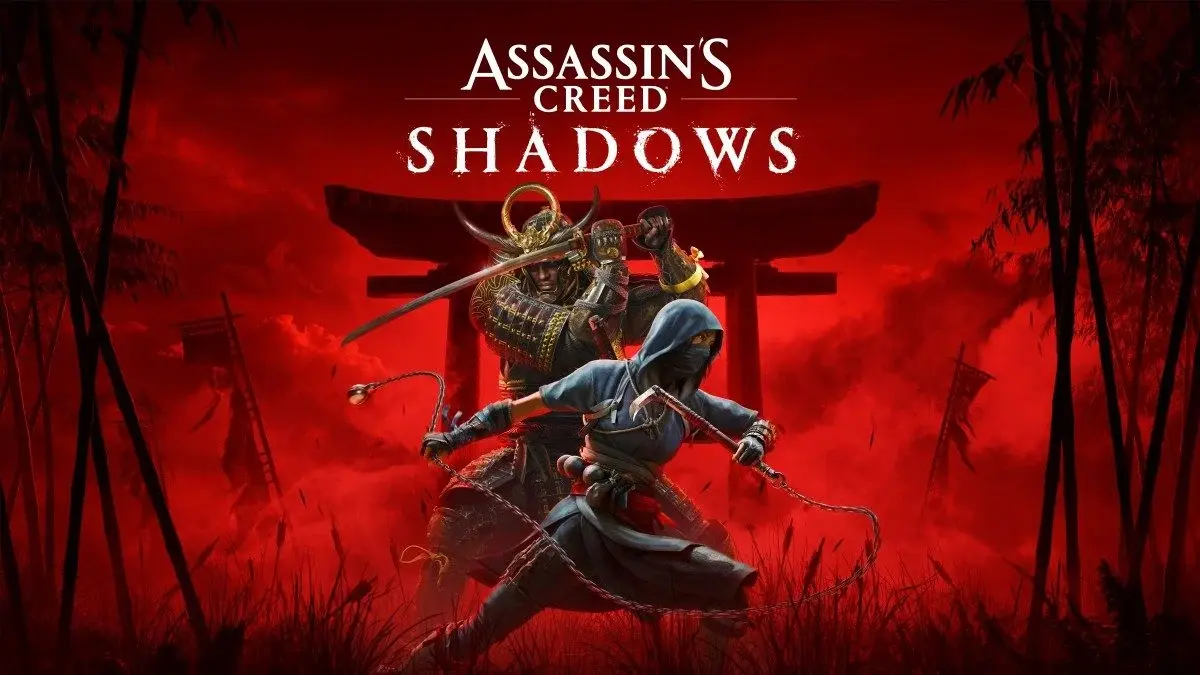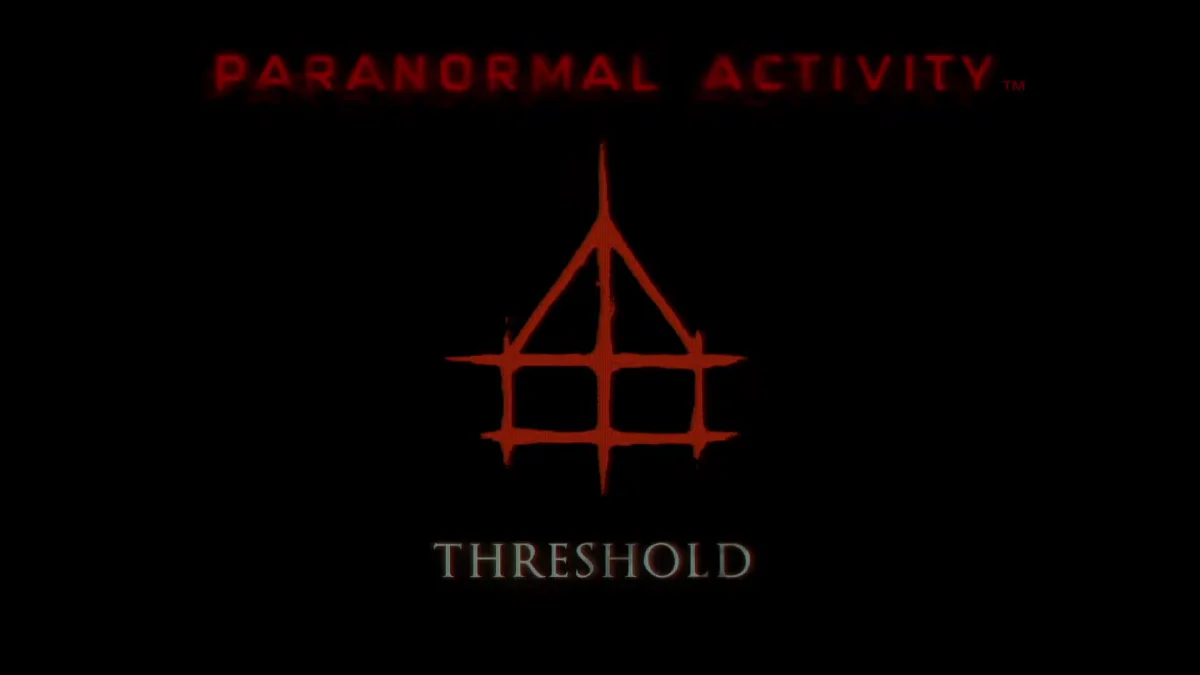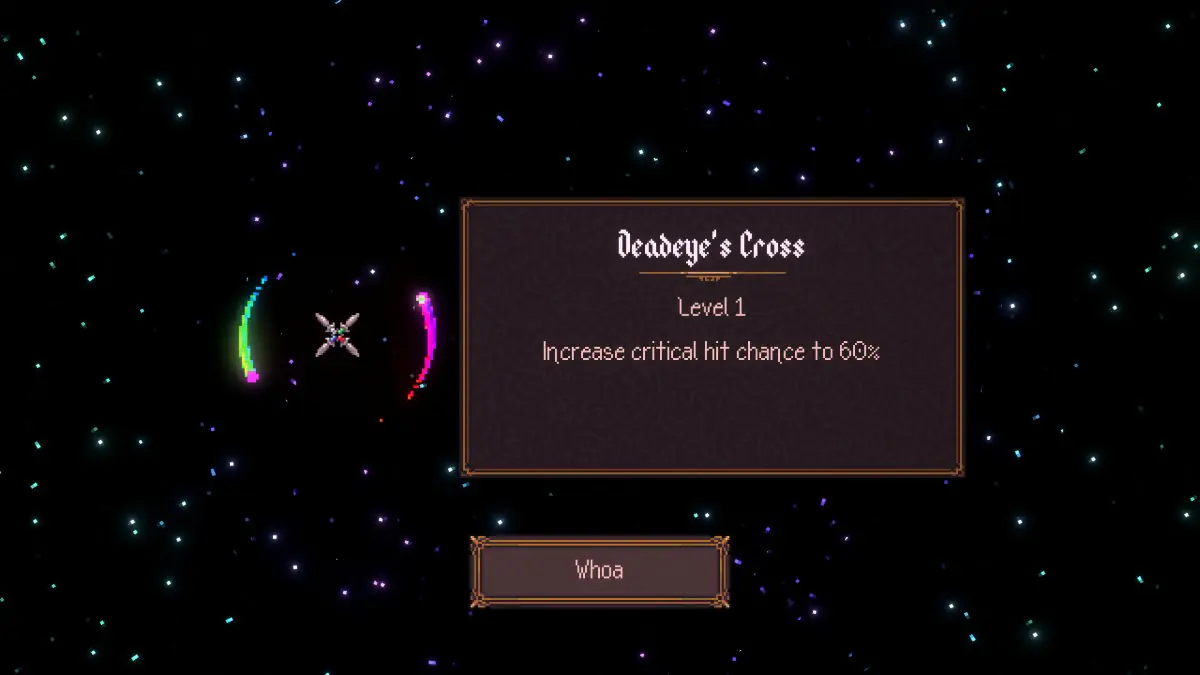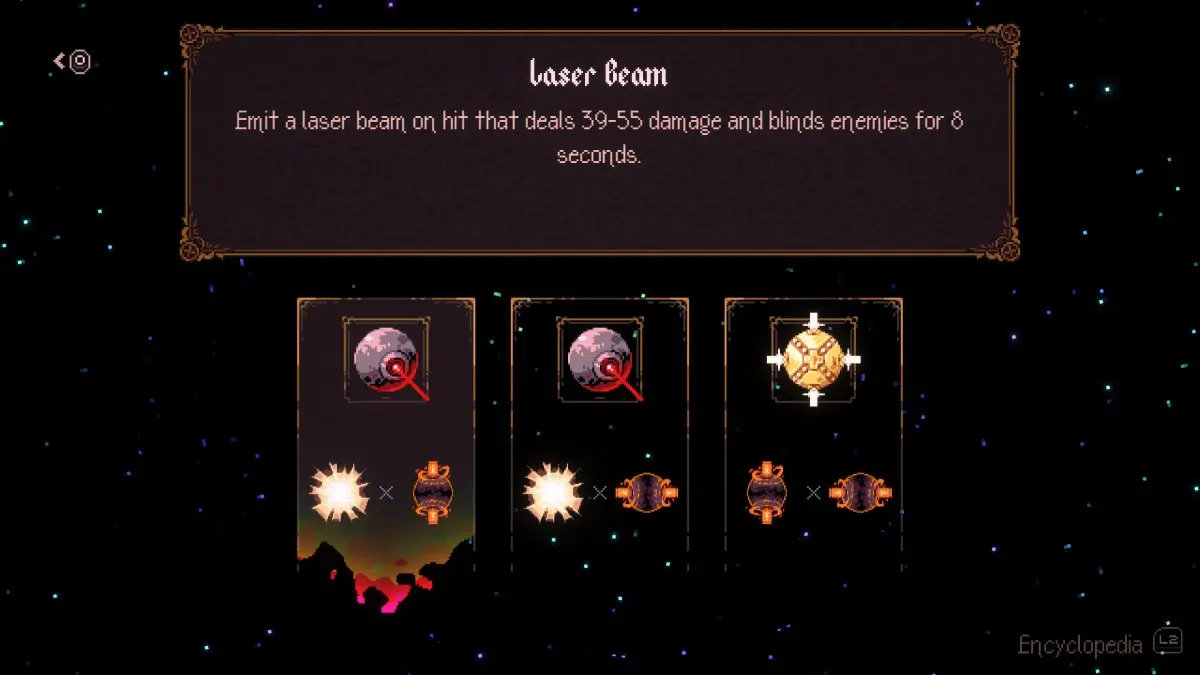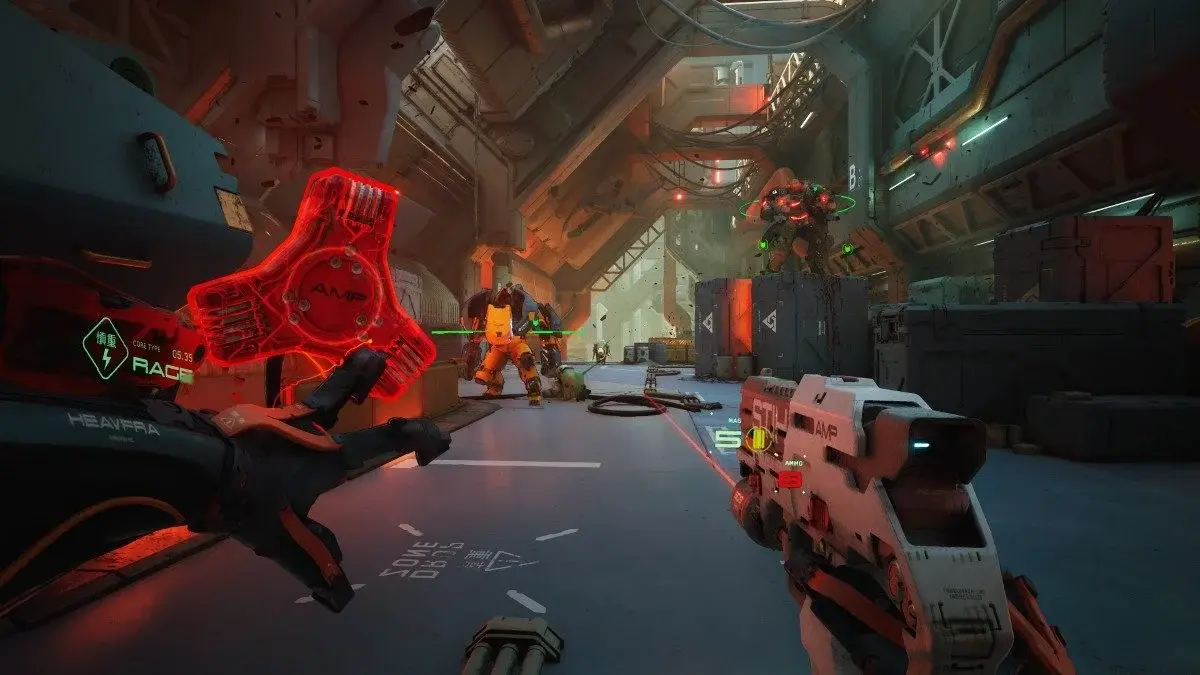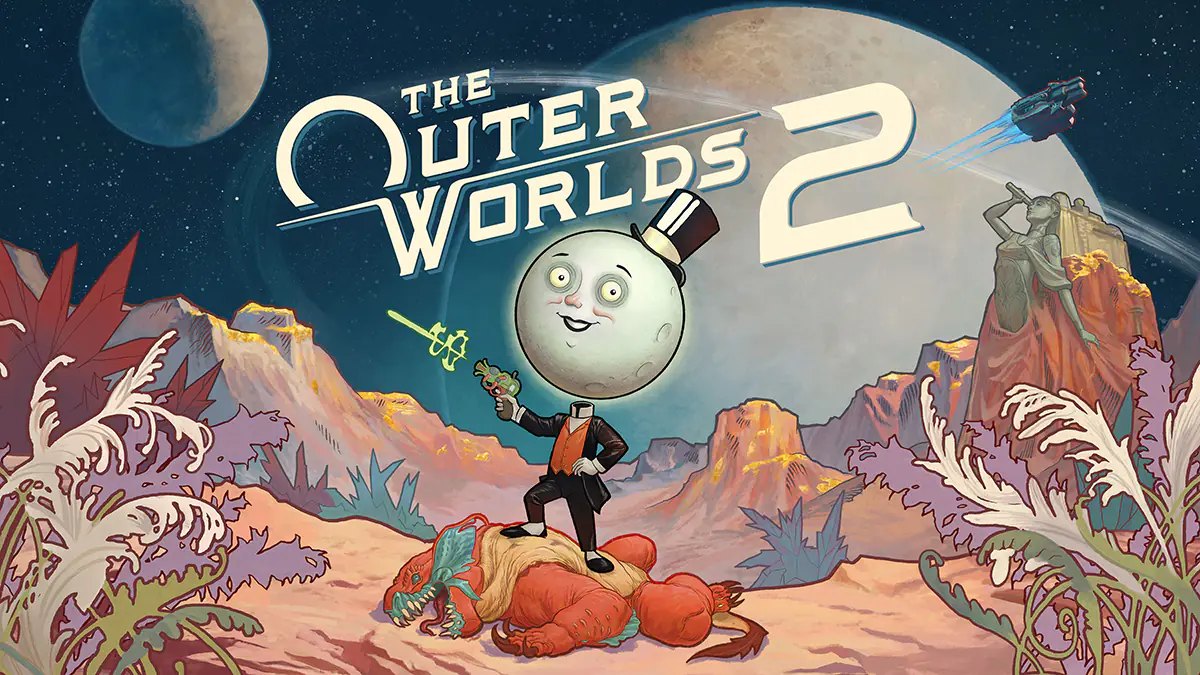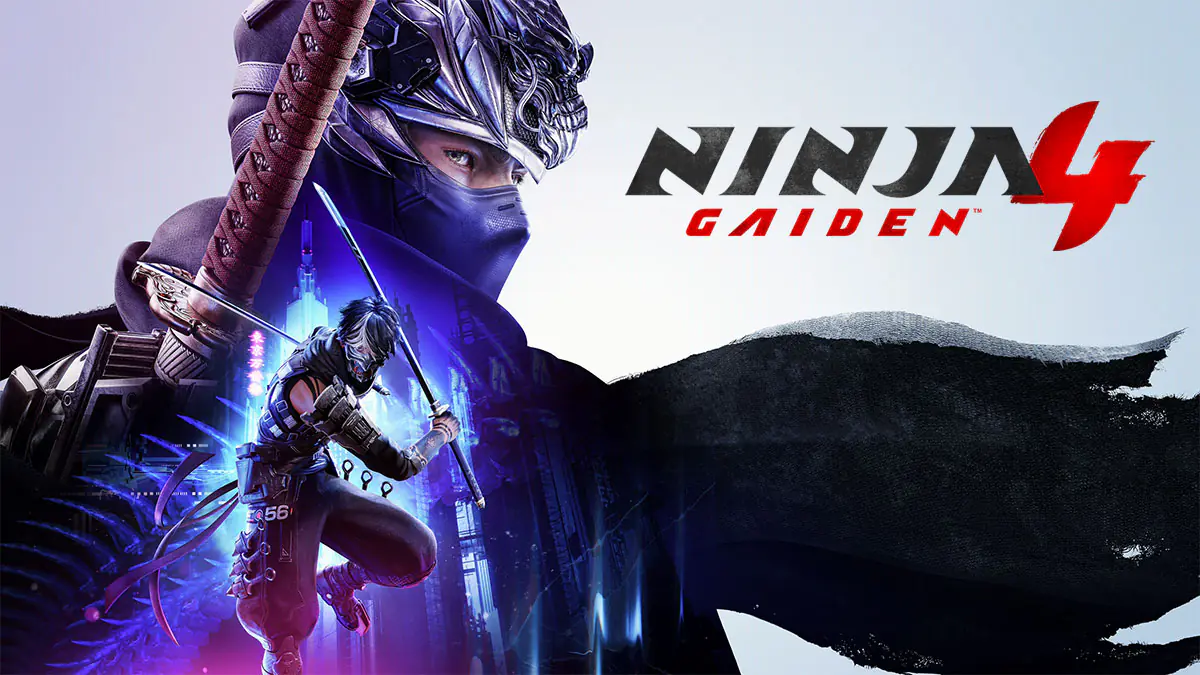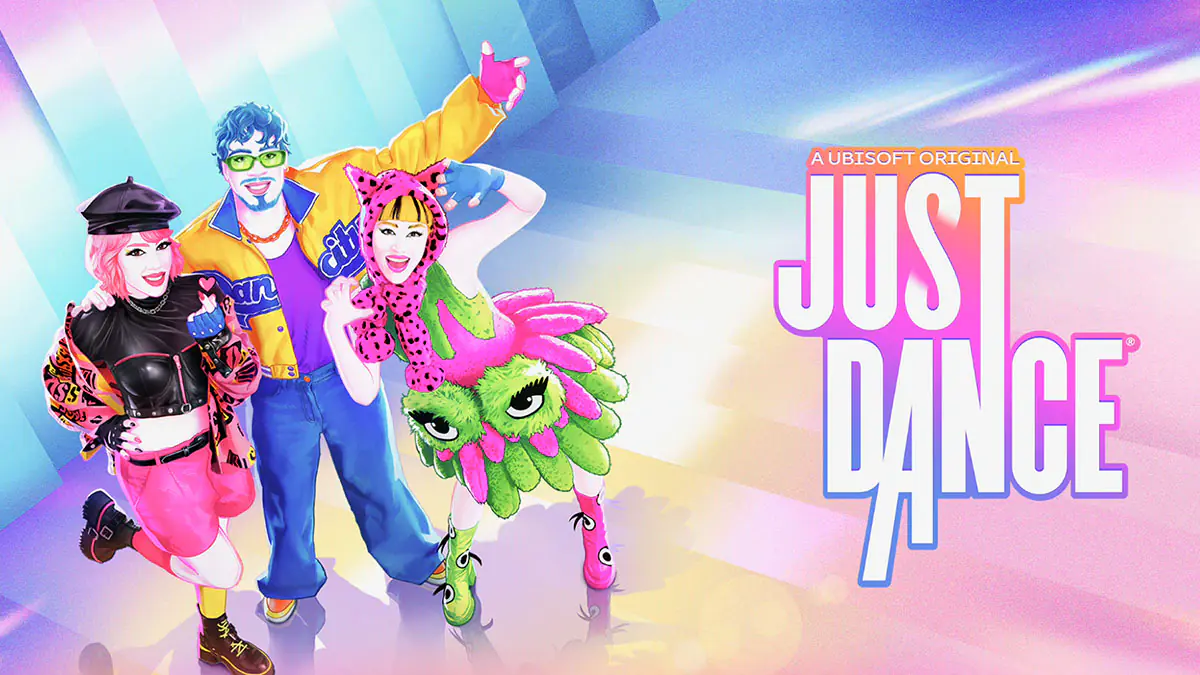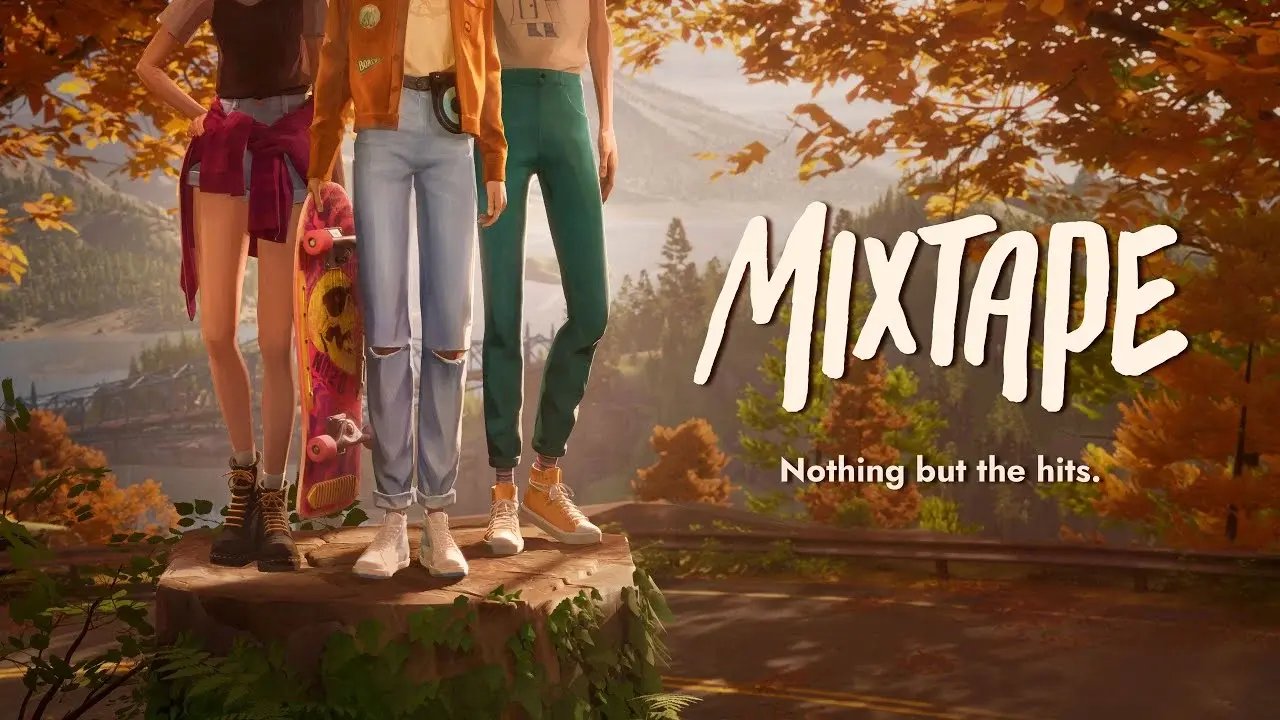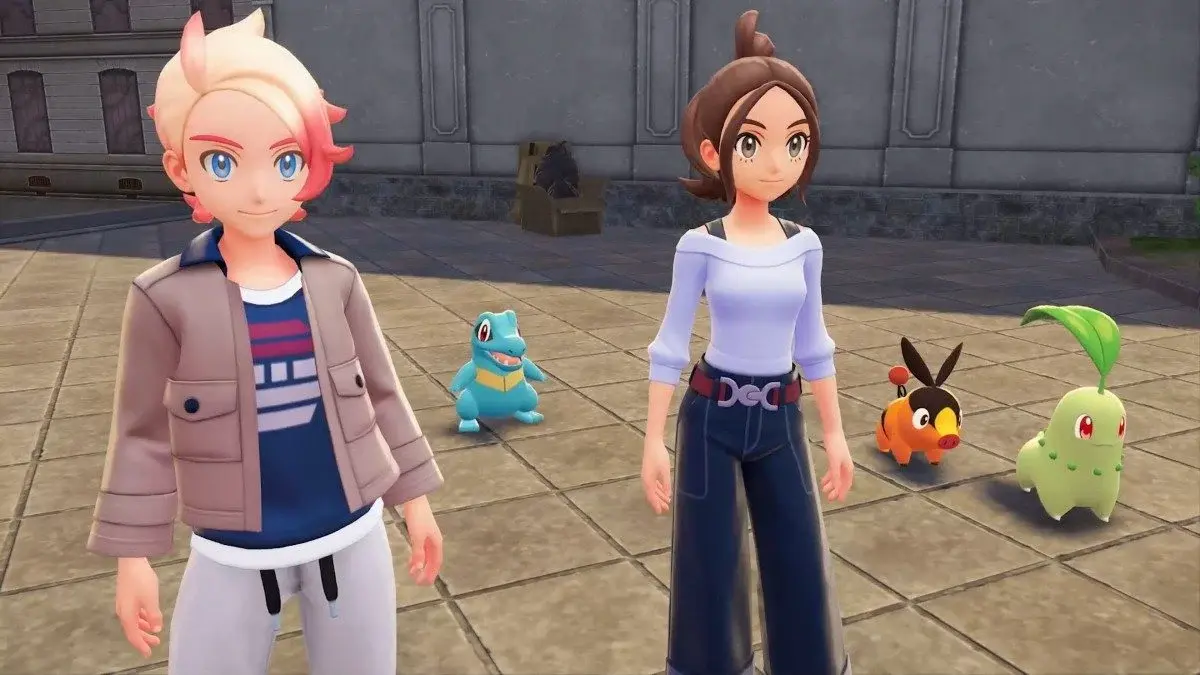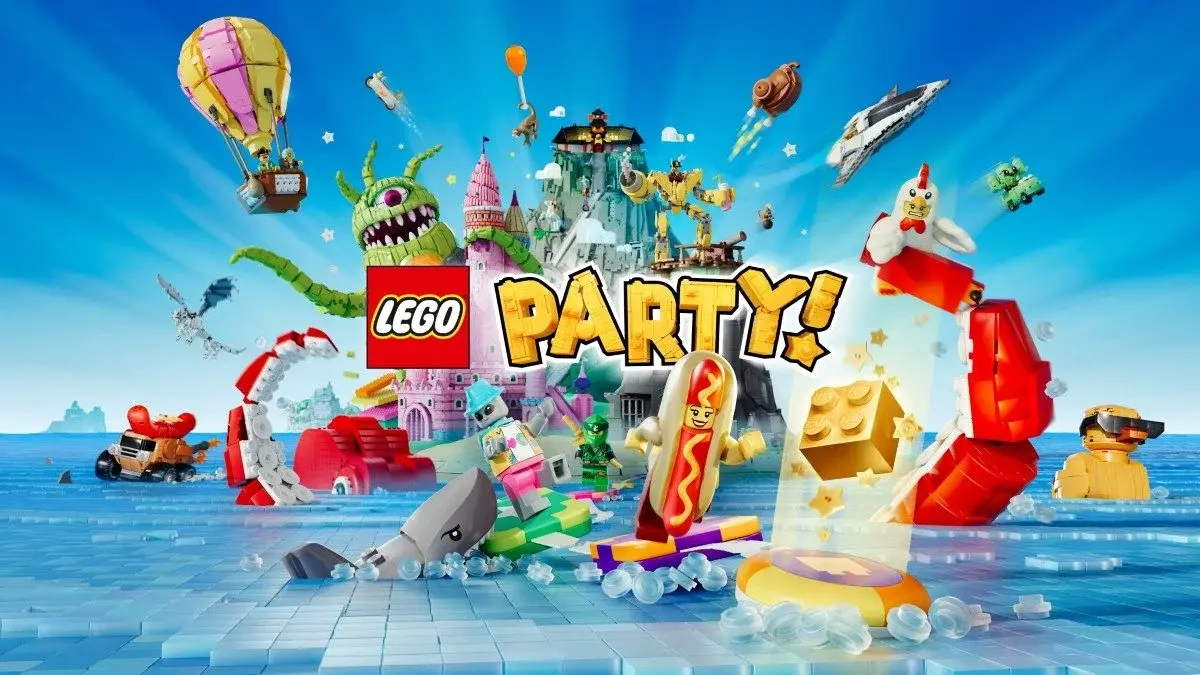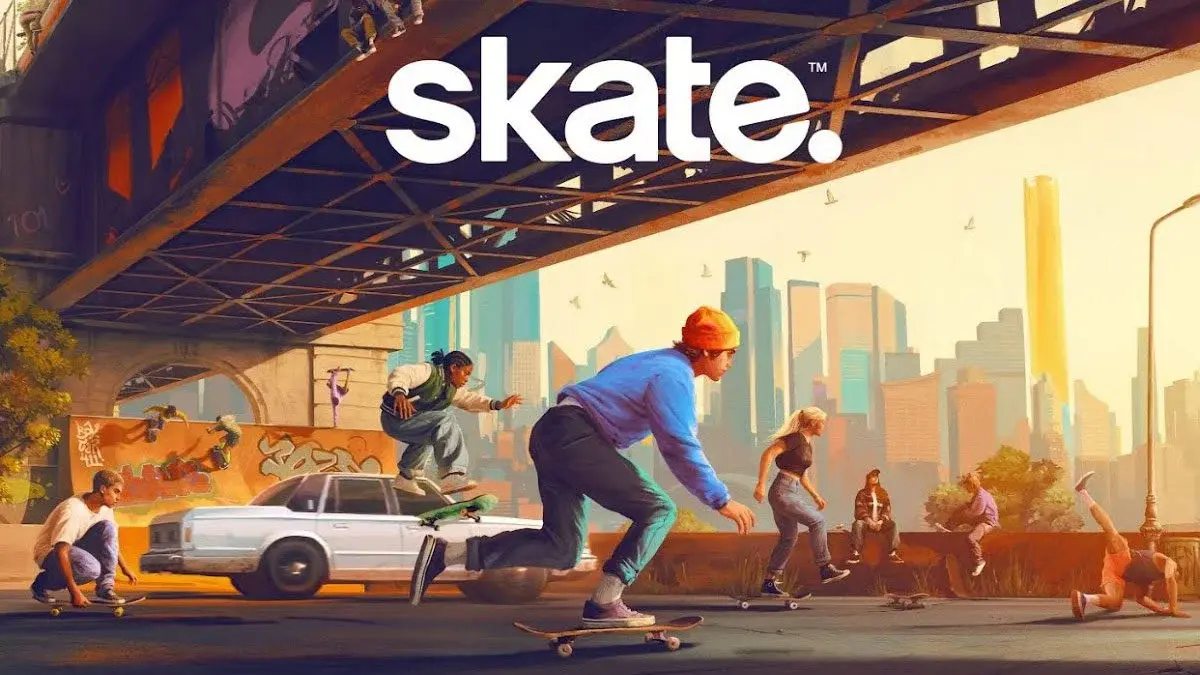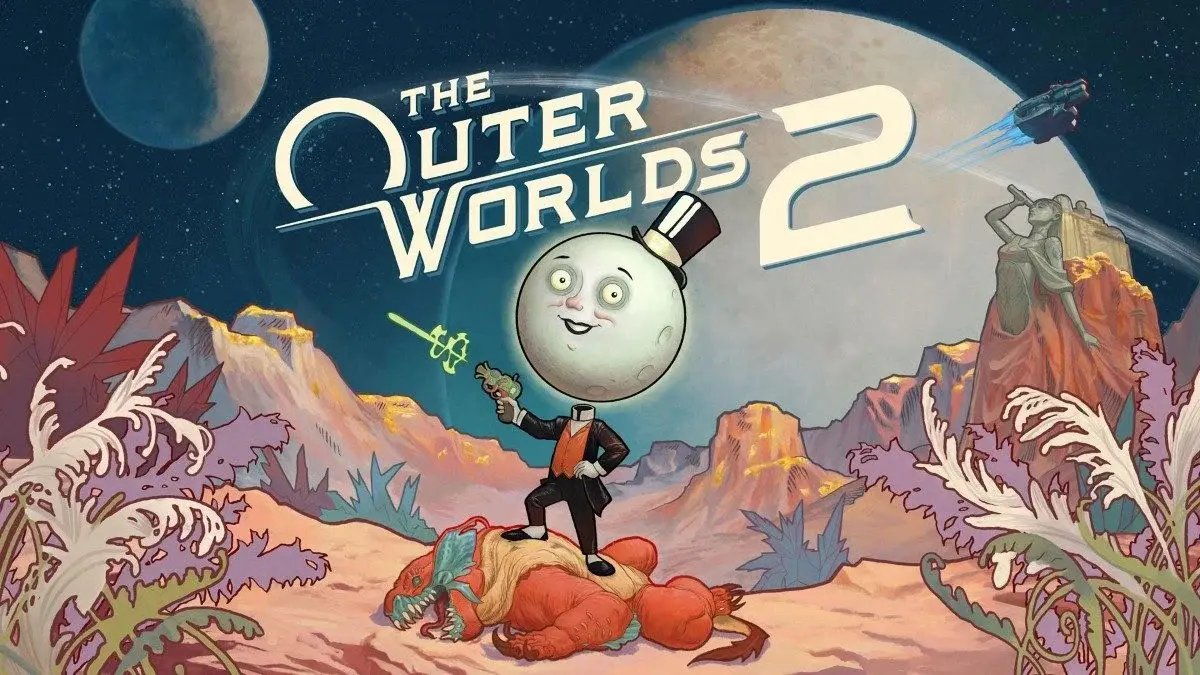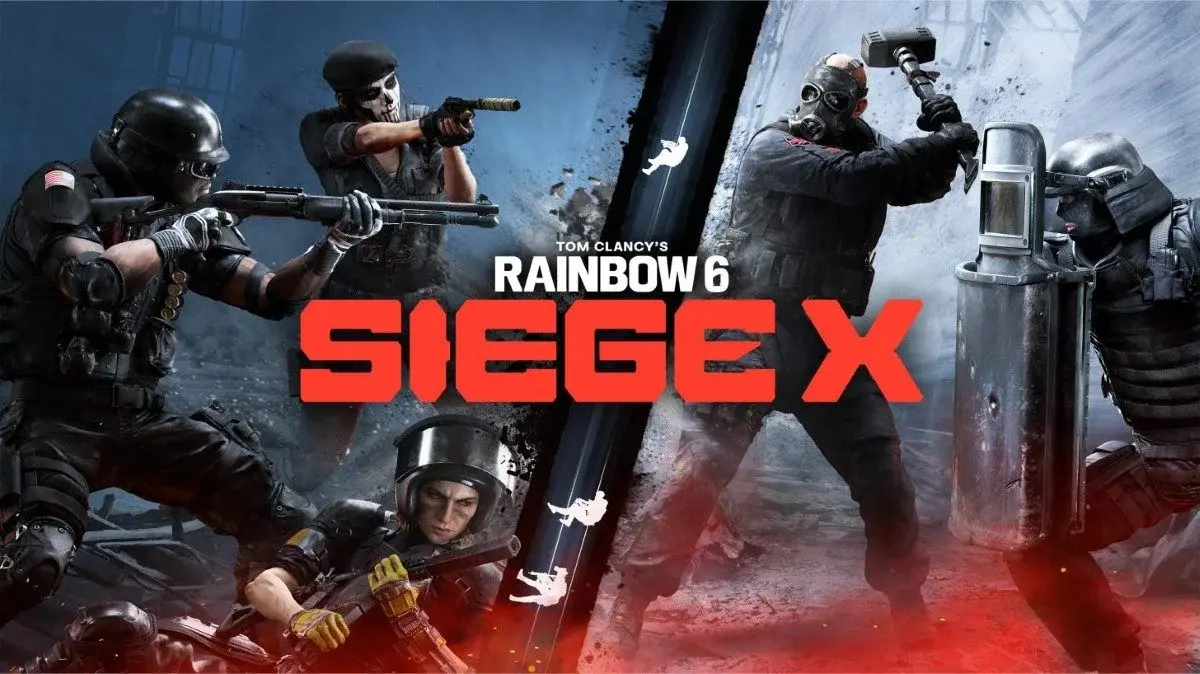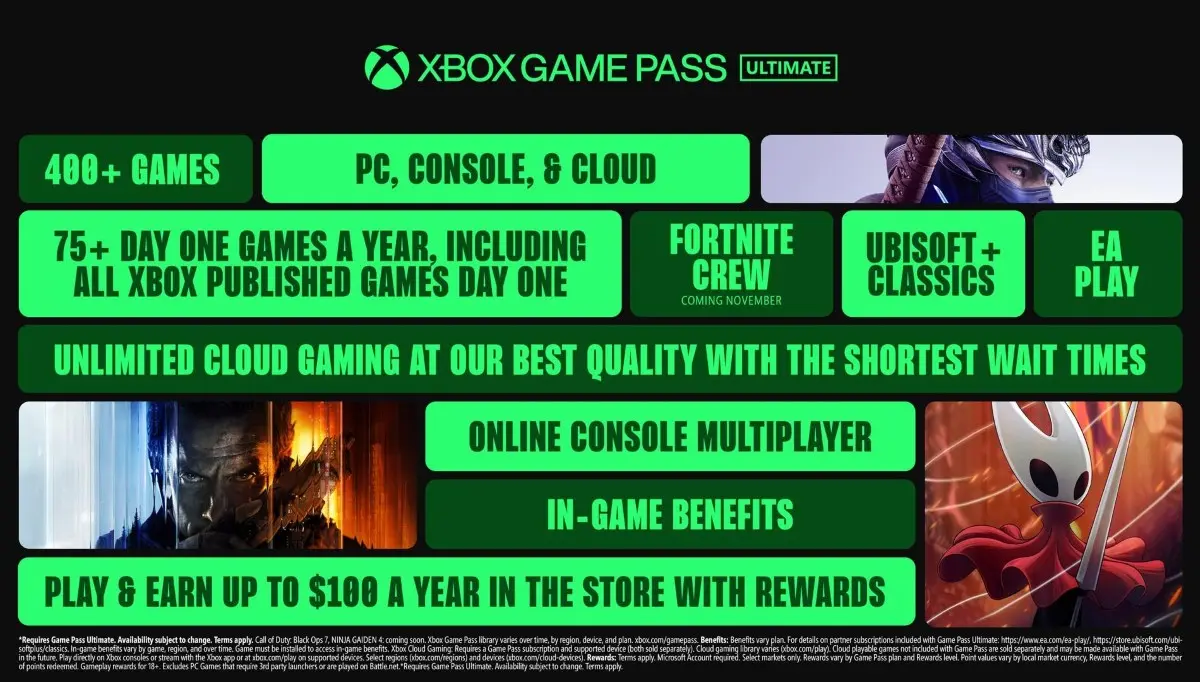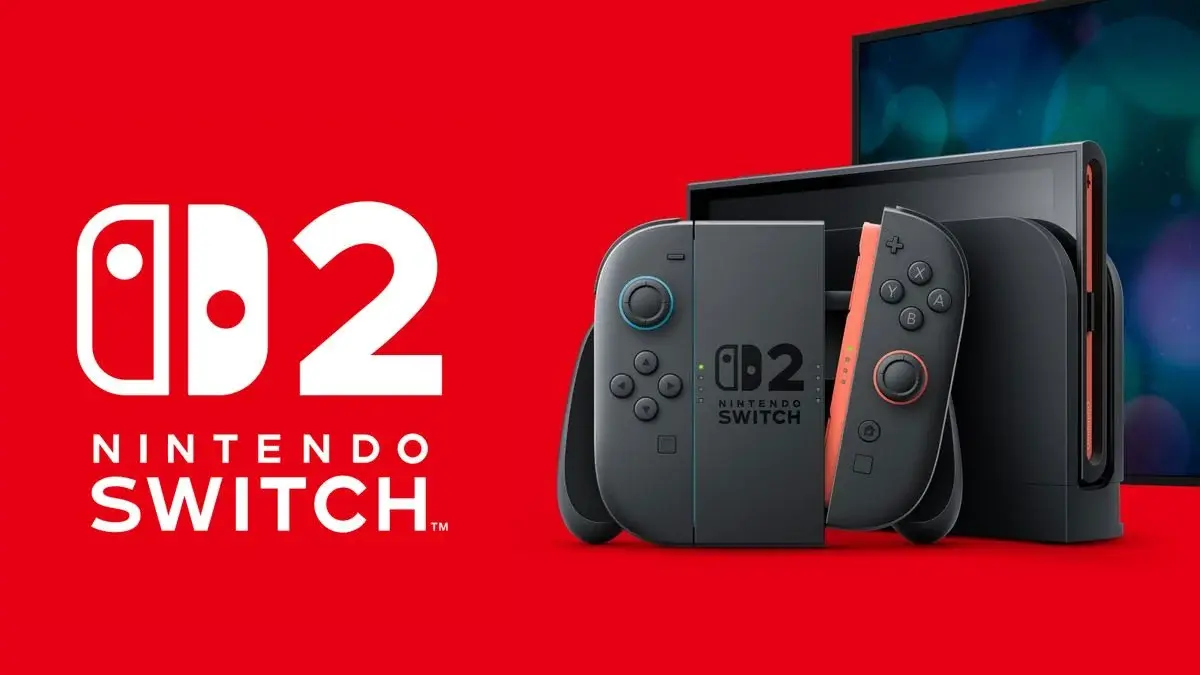The Nintendo Switch 2 arrives as more of the same, in all the right ways, with the perfect balance between performance, design, usability and value.
The Nintendo Switch 2 is a smart evolution of the 2017 handheld-console that defined the hybrid gaming system. The following years saw a raft of imitators and genuine competitors. But in 2025, the Switch 2 arrives as the best handheld on the market, pairing console-quality performance with Nintendo’s signature charm and usability. More importantly, it’s Nintendo’s first iterative sequel console since the SNES that does most things right. It builds on what the Switch did well and improves almost everything that made it feel dated in recent years.
Switch 2 arrives eight years after Nintendo combined its home console and handheld pillars to deliver the best of both worlds with a more consistent single pipeline of games. The concept still mesmerises me – bringing console-quality games to a portable system and seamlessly swapping between playing on a TV or a handheld in seconds.
More powerful Windows-based handhelds and cheaper streaming devices have since flooded the market, but none come close to rivalling usability – the ease of switching from home console to handheld – that the Switch and now Switch 2 provides, and that’s why it remains the clear leader in handheld gaming. But it’s fair to say the original Switch was showing its age long before some of its best games launched, and they suffered for it. Developers and players alike have been patiently awaiting a refresh that’s more powerful, without sacrificing the Switch’s unique offering.
Switch 2 is Nintendo’s best direct successor
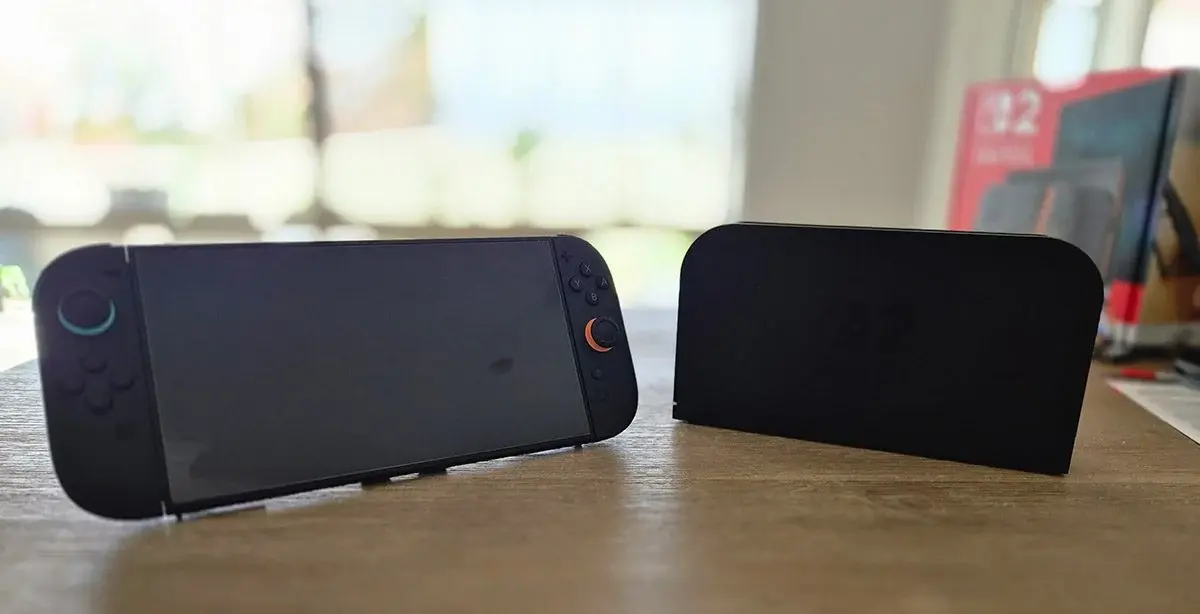
Nintendo goes one of two ways when developing new hardware: it either looks for something completely different to revitalise its market share when the last generation hasn’t sold well, or stumbles into releasing more of the same without a clear day one sales pitch for anyone beyond its rusted on fans. The Switch 2 goes in a new direction. It’s Nintendo’s best direct follow-up in decades, and that begins with a simple and effective naming convention that leverages the clear messaging established 25 years ago by the PS2 – it’s obvious this is a more powerful Switch.
Whereas the Wii to Wii U and DS to 3DS were direct successors that stumbled out of the gate and didn’t feel like a big enough step forward, the Switch to Switch 2 is reminiscent of the NES to the SNES. It’s a clearly better, more powerful and future-proof system that sticks to what works, while making meaningful improvements where it matters most.
This isn’t the Nintendo of the last two decades; the Switch 2 ushers in a modern philosophy and approach to hardware. I was worried they’d focus too much on gimmicks or cost savings, and not enough on the technical aspects that hold games back. But they’ve struck the perfect balance of performance, build quality and value, without getting caught up in the graphical arms race that’s never worked for them.
With a 4K docked output, a 1080p 120 frames per second handheld screen, and fast internal storage, the Switch 2 goes just far enough beyond Nintendo’s ‘new uses for withered technology’ ideologies to deliver a device that feels like it’s secure for the long haul, while still offering the most affordable 4K current-gen gaming system.
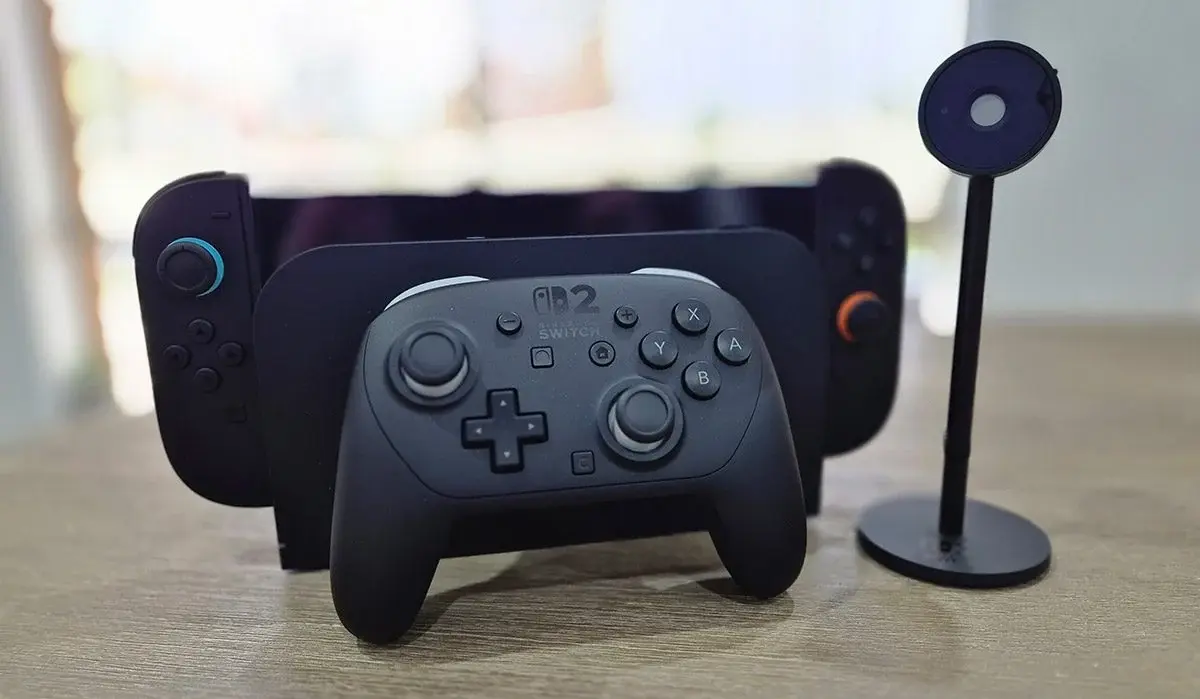
In short, the Switch 2 solves almost all the original Switch’s problems as a handheld-console in 2025:
- It’s powerful enough to resolve performance issues that plagued first-party Nintendo games on Switch, which significantly improves the back catalogue and removes the shackles for future exclusives.
- It can run more demanding third-party games to a reasonable standard for a handheld.
- The bigger screen makes games designed for a TV or monitor easier to play in handheld mode.
- It’s more comfortable for adult-sized hands with larger buttons and better ergonomics, with a premium feel across the board that helps justify the cost.
- Software is snappy and the eShop actually works like a modern online store now.
Plus, Joy-Con magnets are cool.
Premium hardware
From the moment you take it out of the box and snap on the Joy-Con 2s, the Switch 2 feels like a premium product to hold. The larger 7.9-inch (20cm) LCD screen offers plenty of real estate, and while it’s only slightly larger than the Switch OLED (7-inch) on paper, in practice it’s a big upgrade – especially for games originally designed for TVs or PC monitors, which were becoming challenging to play on the original Switch’s 6.2-inch display.
The form factor retains the Switch’s thin profile but is noticeably wider and taller, and more accommodating of adult-sized hands with larger buttons, which I find quite comfortable for short bursts; longer gaming sessions are still best played with a Pro controller.
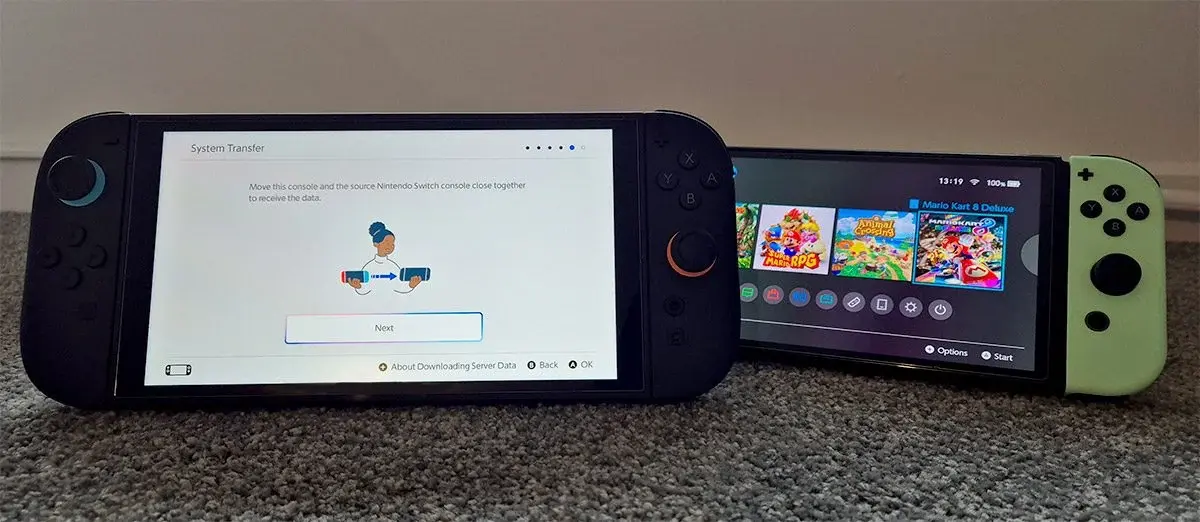
It’s also heavier and less portable – this isn’t something you’ll casually throw into a bag and carry around all day as it takes up considerable space and weight. It also needs space to use, so it’s not something I’d feel comfortable trying to play crammed into the confines of an economy plane seat or a packed train or bus.
As a larger, more expensive device, the Switch 2 is also not as child-friendly as the original model or its handheld-only revision. Kids raised on oversized iPads might be more accustomed to heavy devices, but I can’t imagine my 10-year-old self, who grew up hunched over a Game Boy Color, handling – and not destroying – such hulking hardware. I suspect a cheaper and smaller Switch Lite 2 is inevitable – as is a more expensive Switch OLED 2 in a few years, judging by the sizable unused bezel that seems to be following the same playbook.
Still, like the original, the Switch 2 remains an ideal at-home handheld, leveraging the ease of swapping between handheld and TV modes. PC-powered handhelds or streaming to a phone or PlayStation Portal provide similar ways to play, but they’re cumbersome by comparison.
The dock includes active cooling this time around and given the added demands of games like Cyberpunk 2077, it seems to work well. With power somewhere between the PS4 and PS4 Pro, it doesn’t suffer from the same jet-engine fans that have plagued Sony’s consoles. In fact, it’s whisper quiet in all modes.
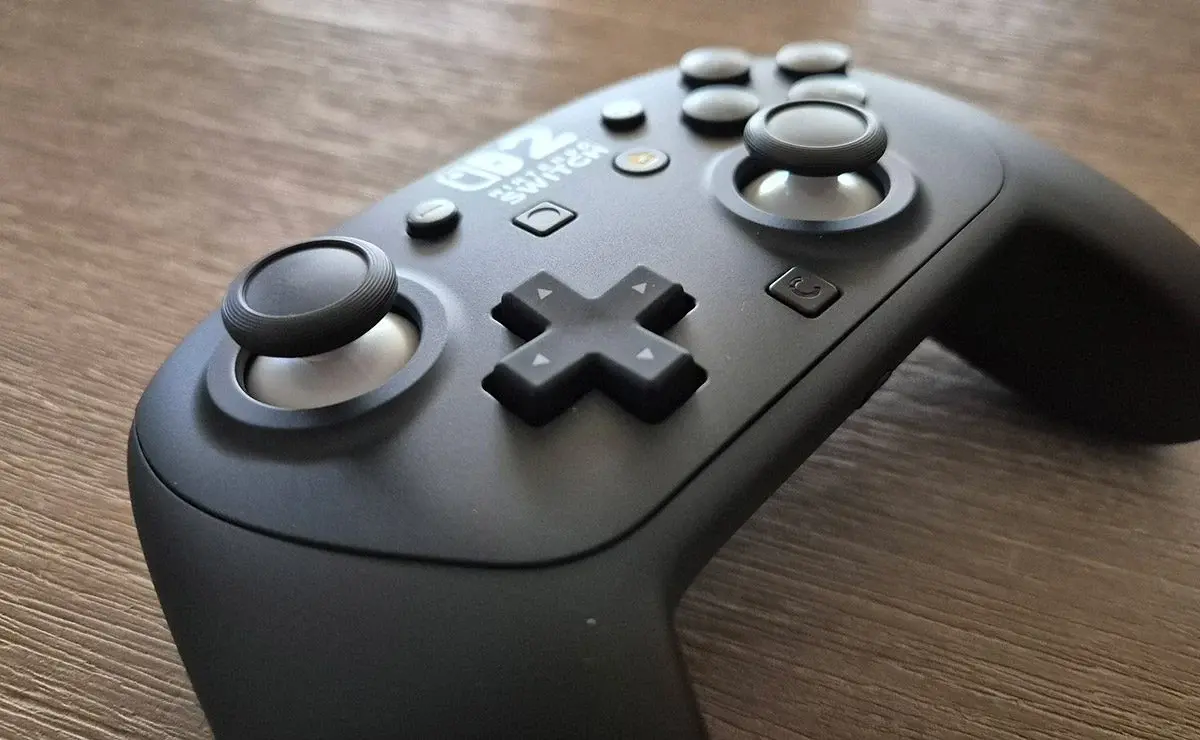
While its performance is excellent, the dock design is one of the few faults with the Switch 2. Perhaps due to the extra components or the need to contain the heavier console, it doesn’t feel as sturdy as the Switch OLED dock. It also allows for a surprising amount of wobble when the console is inserted. None of these are issues in practice so long as the dock isn’t at risk of being knocked over and there’s ample room to slide the Switch 2 in with visual guidance.
The other step backs were calculated ones. Yes, an older LCD screen isn’t as nice as the Switch OLED, but as far as LCD screens go, with HDR and variable refresh rate (VRR) enabled at 1080p up to 120 frames per second, this is a strong performer. Although, it’s fair to say proper HDR on my LG OLED TV in docked mode looks far better than the basic implementation on the Switch 2’s screen – just make sure your TV is setup properly. It was the right call to keep the sticker price affordable, even if we’ll inevitably be convinced to double dip. The battery life has also taken a beating, but with more powerful specs, there’s little that can be done with current battery technology. It’s another reason the Switch 2 is more suited to being an at-home handheld.
Launch games, performance and backwards compatibility
The real test for the Switch 2 was always going to be how it runs games, both new and old. While the launch line-up is light on brand-new titles, the upgraded re-releases do more than fill the gap for those who missed them – they prove the Switch 2 is the best place to play your existing library.
Much like the early days of the PS5 and Xbox Series X, which were also carried by cross-gen games and remasters, it’s all about performance bumps, better resolutions and faster loading times. With the Switch 2, it’s also about fixing unacceptably poor performances and finally allowing some of Nintendo’s best games to run as they always should have. That’s the reason to buy a console at launch this generation – well, and to avoid multiple mid-gen price hikes. The new games will follow in time.
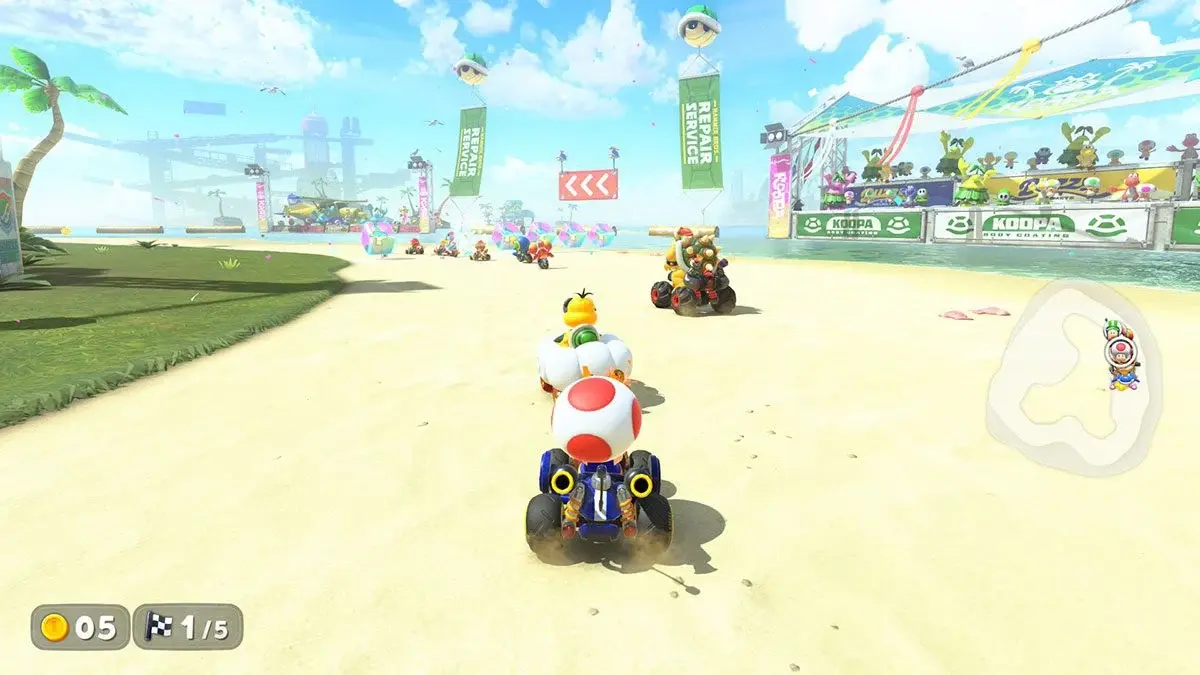
Mario Kart World is the lone headlining launch title and while it will be the system’s best-seller, it’s not a system-seller – it’s a staple everyone plays for years that complements a larger gaming collection. That said, it’s a great showcase of how polished Switch 2 games can look and run with the chaos of 24 players barely missing a beat as we noted in our Mario Kart World review. It’s a clear generational leap in gameplay and performance, and wouldn’t have been possible to this extent on Switch 1.
Nintendo is a calculated publisher that staggers its games, and the future is bright with new Switch 2 titles likely to drop monthly throughout the rest of the year. Many of them will be lengthy single-player offerings, but as a devout Nintendo player, I can’t help but wish one of them was available sooner than Donkey Kong Bananza in mid-July.
Nintendo consoles have traditionally launched with only one or two new first-party games, but generally that includes a deeply captivating single-player game, like The Legend of Zelda: Breath of the Wild was for Switch. Having already played everything I wanted to on the OG Switch, I’m finding myself dabbling in Mario Kart World for an hour and then doom-scrolling through a large collection of games I’ve mostly completed.
The upgrades for Breath of the Wild and Tears of the Kingdom are excellent – these are proper remasters for a small upgrade fee, and clearly the best way to play these games if you haven’t already, now at a smooth 60 frames per second.
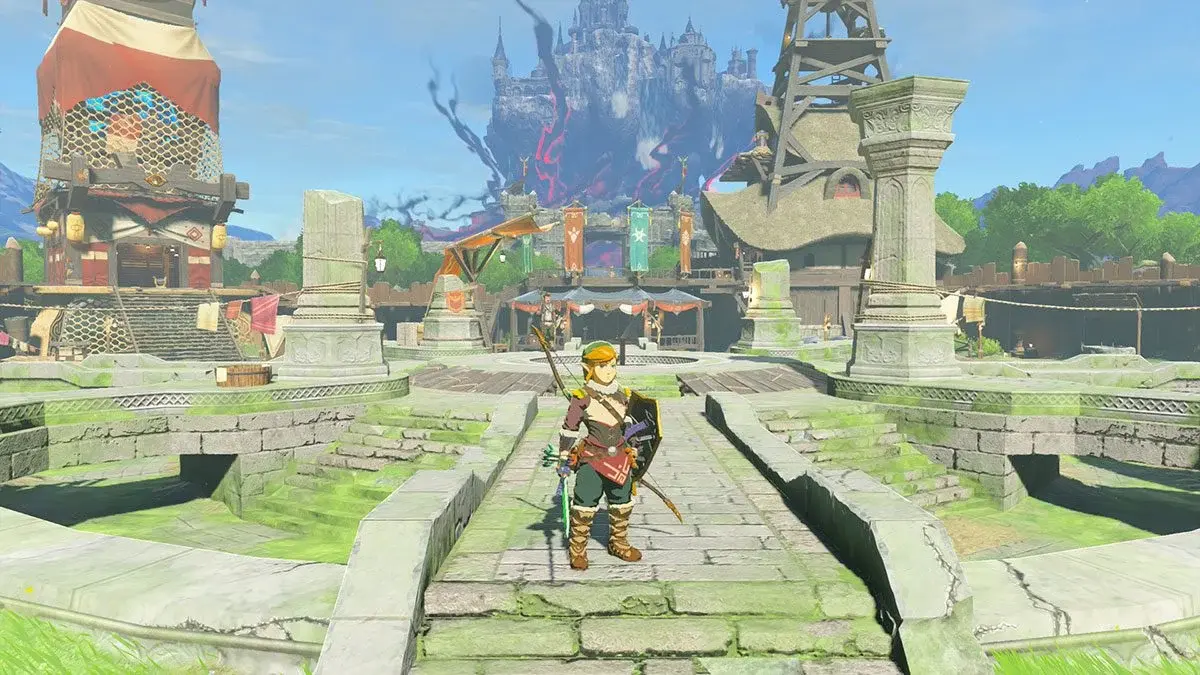
There’s also a nice selection of free updates to existing games, which improve the resolution and performance of some of the Switch’s biggest games. The most impressive are to Pokémon Scarlet and Violet. On the original Switch, they ran so poorly they were borderline unplayable. They were the first Nintendo-published games I ever abandoned purely due to terrible performance issues. The framerate was a mess stuck hobbling in the low-20s and background elements like windmills chugged along around 3 frames per second.
On Switch 2, they feel like new releases. Pokémon Scarlet and Violet now run at a smooth 60 frames per second, and while some textures are still very blurry at a low-res and there’s a lot of pop-in, there’s none of the crippling performance jank that ruined them. Better yet, the extra power allows more wild Pokémon to spawn in the world, delivering a livelier environment and the intended gameplay experience – it’s much easier to catch ‘em all when Pokémon are visible.
Considering the poor performance, I’m glad Nintendo didn’t rollout a paid upgrade. They simply fixed a disappointing release and have transformed the experience. For all my whining about a lack of single-player content at launch on Switch 2, I’ve found some with Pokémon Violet now that it works properly. The stuttering top-down Zelda games, Link’s Awakening and Echoes of Wisdom, also get considerable performance fixes to run at a smooth 60 frames.
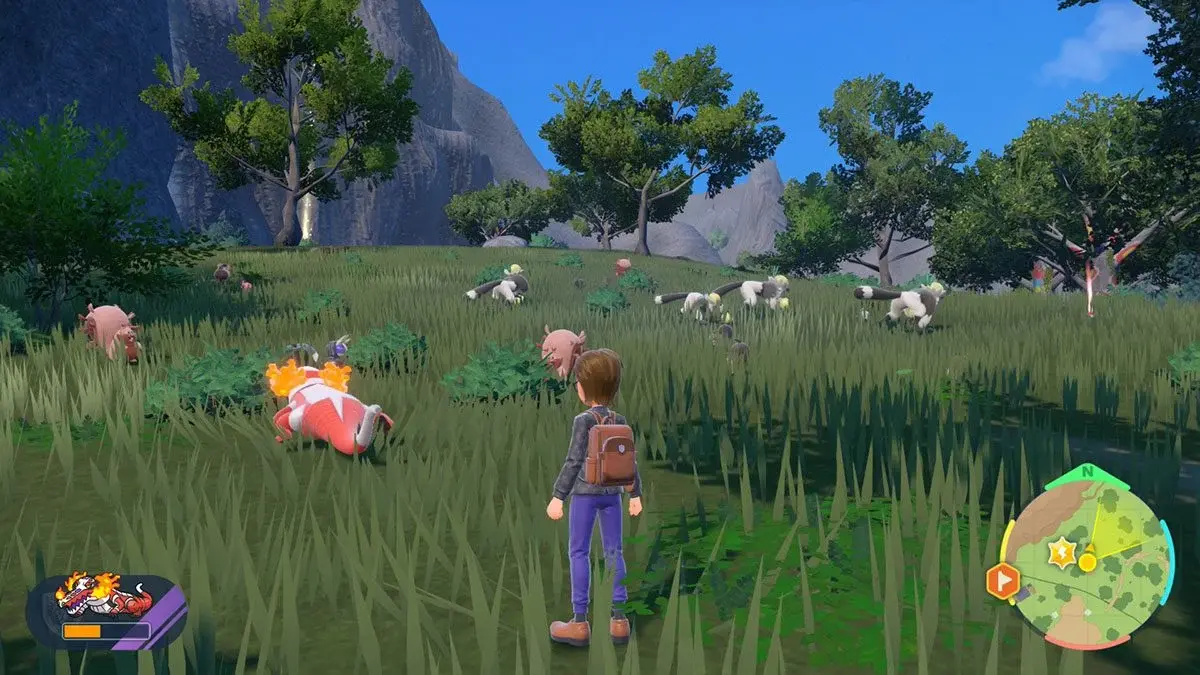
Those returning to Nintendo, either having skipped the Switch or dropping off during its elongated 8-year lifespan, are in for a real treat. In an era where first-party exclusives are becoming rare, the Switch is stacked with an amazing line-up of games that can’t be played elsewhere, and the Switch 2 is the best place to play them.
The rest of the launch line-up is padded out by older third-party games, which would’ve looked like a dog’s breakfast on Switch 1, coming to a Nintendo platform. The likes of Street Fighter 6 and Cyberpunk 2077 run surprisingly well – for a handheld. Of course there are still compromises, but they’re now the kind of concessions that are acceptable if handheld play is important to you.
For simpler indie games or those more traditionally suited to a portable, like Suikoden I & II HD Remaster, Switch 2 is now clearly the best option to provide the flexibility without needing to sacrifice quality. The only problem is that while Nintendo has done a decent job with free patches and paid upgrade paths for Zelda, some publishers aren’t offering them at all and demand full payment again, which is very disappointing to fix framerates and bump resolutions.
Original Switch games that haven’t been patched yet may also run better – just don’t expect any miracles. Anything locked at 30 frames per second will remain that way, but games that struggled to hit their targets or implemented dynamic resolution scaling now seem to brute force their way to the best-case scenario.
With a solid line-up of new games to come, the biggest win at launch on Switch 2 is a better way to play your existing library and backlog. This is the best implementation of backwards compatibility we could have hoped for, and the future is bright for a generation where at least first-party Nintendo games won’t be constrained by hardware limitations. If the PS4-PS5 cross-generation continues to linger, third-party support should be strong for the next few years, too.
Improved controllers – we have a Joy-Con evolution
If Nintendo’s revolution came with the Wii Remote’s waggle, the Joy-Con 2 are more of an evolution – but it’s exactly what we asked for. It remains to be seen if stick drift has been fixed, but the larger buttons on the Joy-Con 2 are certainly more comfortable for short sessions – I’m not sure how we put up with those tiny Joy-Con face buttons for so long.
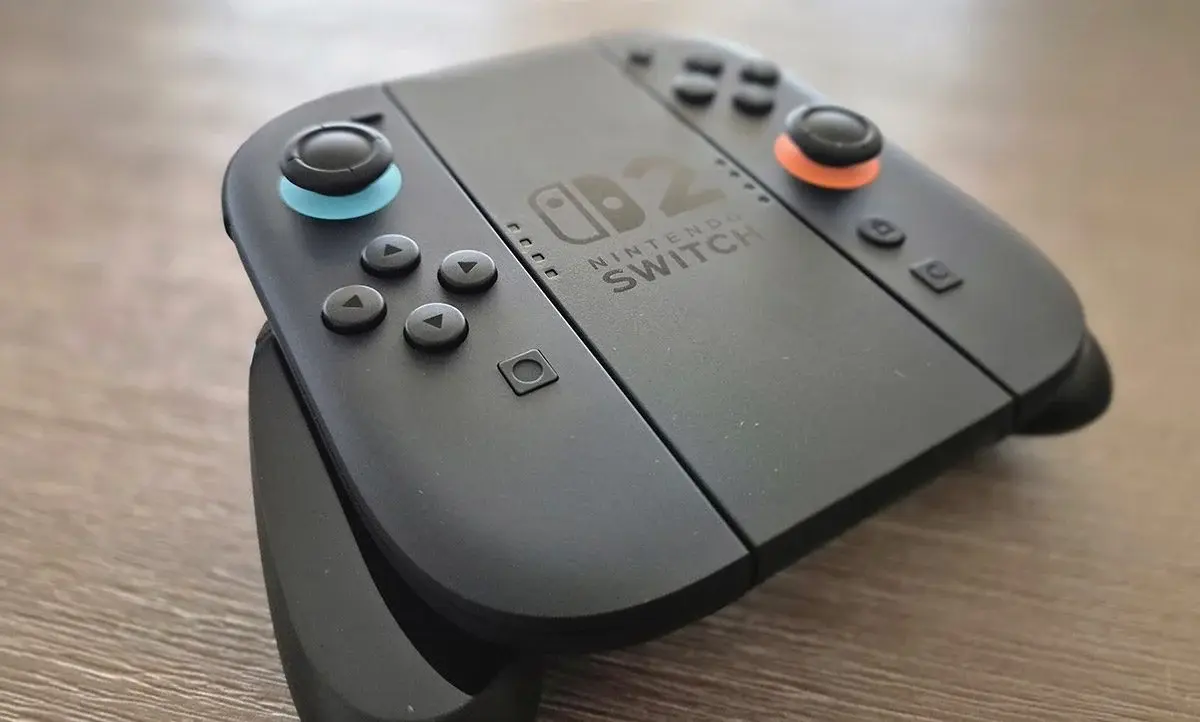
Like the system itself, the Joy-Con 2 feel more premium and the sticks have a nice smooth motion. The magnetic snap-on connector is a small, but brilliant upgrade that makes detaching and reattaching far more satisfying than the old slide-on method, while also feeling very secure without a hint of wobble.
The mouse controls, in-built to each Joy-Con, are a handy addition done well. Like switching from TV to handheld mode, it’s simple and fast to switch between button, motion and mouse controls.
The mouse is responsive and works surprisingly well on the arm of a couch or even your jeans. Mouse controls have been optional on other consoles for years, but it’s always such a hassle. Nintendo’s approach is functional with almost no barrier to entry as it’s built into the system and should make titles like real-time strategy games far more accessible on Switch 2.
Of course, it’s most accurate and comfortable on a flat surface so it’ll be best implemented with the Switch 2’s new sturdy kickstand deployed in tabletop mode. I’m unlikely to ever play like that, so probably won’t use the mouse often, but it’s nice to have the option alongside motion and touchscreen controls – which also means there are plenty of variations now, so no reason not to bring Wii, DS and 3DS games to Switch Online.
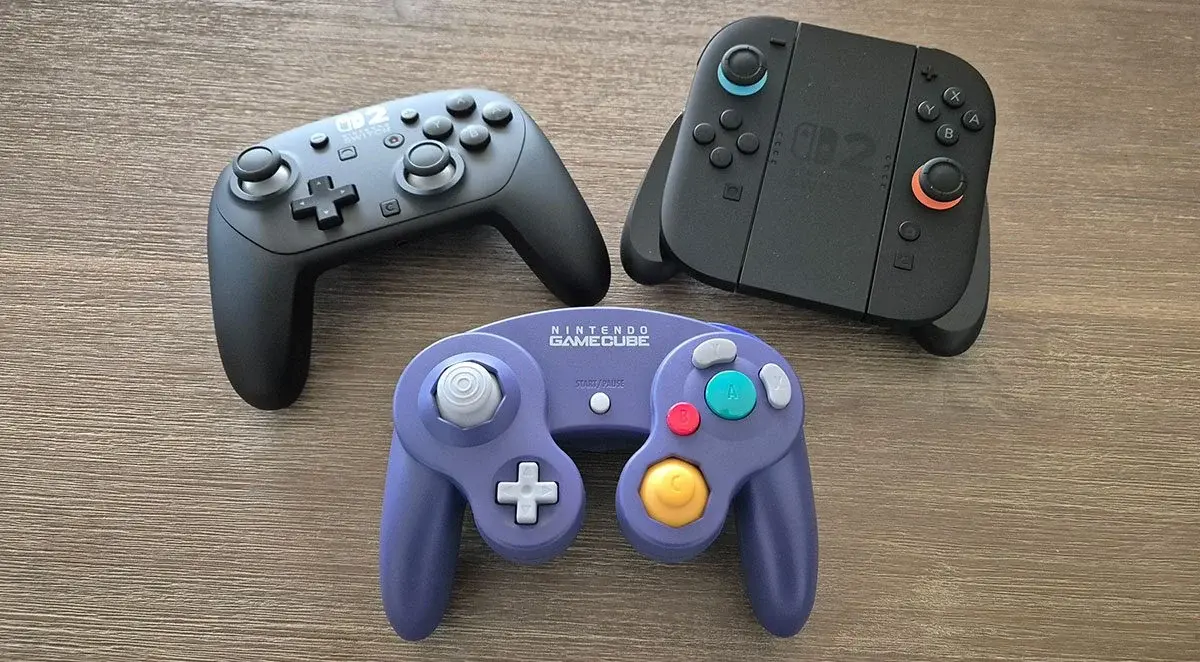
Meanwhile, the new Pro controller feels great and is easily the most comfortable way to play Switch 2, so I highly recommend it for longer sessions. The new GL and GR buttons, on the back of the controller, provide programmable buttons that can be assigned differently for each game. I find these to be super handy to replace clicking the sticks for LS and RS, and it’s a pleasant surprise to see Nintendo include them on their standard-priced controller, rather than locking rear buttons to a premium option as Microsoft and Sony do. The only problem is the Pro controller retains digital ZL and ZR buttons rather than proper triggers, which frankly suck.
The new GameCube controller continues the trend of faithful recreations, and if you don’t want an entire set, the Wii U and Switch GameCube adapters allow you to use the original wired GameCube controllers, if you still have them. Likewise, original Switch Joy-Con and Pro controllers work wirelessly with Switch 2, so there’s no need to replace everything for 4-player local play.
A snappy OS and online play
To round out the premium experience, the Switch 2 doesn’t just look modern, it performs like a current-gen system with a snappier OS. The new eShop is actually functional this time and doesn’t feel like it’s going to crash at any moment, and games download impressively fast.
As with their other design choices, I’m glad Nintendo opted for faster storage and to champion the fledgling microSD express format. Sure, it’s more expensive to expand upon the system’s 256GB of storage, but it’ll help the Switch 2’s longevity with future-proof fast loading times. Loading games from internal storage or a microSD express card both seem to be a little faster than playing from a Switch 2 cartridge, so perhaps game key cards — physical games that require a full download and run from internal storage — aren’t all bad.
Online play is more of a mixed bag. If time is of the essence and you just want to get into a lobby in Mario Kart World with 24-players, it’s excellence, considering how much cheaper it is than PlayStation Plus (and whatever Xbox Live Gold is called now). It works well with fast matchmaking and no issues with lag.
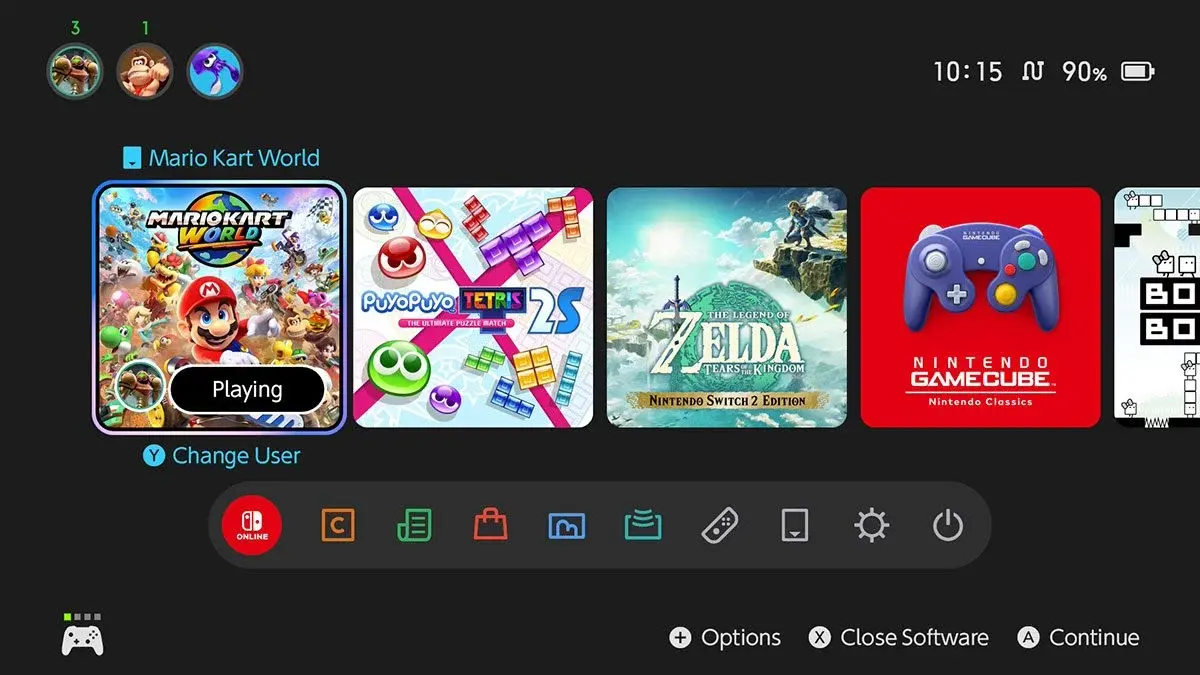
Beyond that, things start to get complicated. Mario Kart is the only new current-gen game we can test, but there doesn’t seem to be an easy way to start a gaming party with friends. It should be simple to invite friends, stay in a party or lobby together, and enter 24-player knockout Mario Kart. But the only option to do that together is against CPUs rather than other real players, which defeats the purpose of playing online.
It’s strange, especially given how prominently Nintendo is pushing the new GameChat feature. You can only use it with friends – and only after verifying your mobile number and approving them – but even then, you can’t easily jump into a proper online match of Mario Kart World together against real opponents while chatting. It’s a baffling disconnect for a feature that’s meant to bring friends together online.
GameChat itself is perfectly serviceable. Nintendo has finally added voice chat directly to the console, 20 years after the Xbox 360, but restricted access to verified friends. Given the prevalence of, and issues with, Discord I don’t mind that. They’ve done it in a very Nintendo family-friendly way and potentially given parents an option they’re happier to support. It just means it’s a fairly small feature.
There’s a use case for cousins or friends across the country playing together, but otherwise, it feels like a relic from COVID that would have been huge if this launched with a new Mario Party game in mid-2020. In 2025, it feels dated and of limited use for anyone with a full-time job who struggles to coordinate schedules to play with friends.
GameChat is a long overdue feature, and it’s great Nintendo has added it, but I’m not sure why they’ve made such a big deal out of it. It’s so long overdue that it should have been relegated to an asterisk. Perhaps in-lieu of other gimmicks to promote, Nintendo has gone overboard marketing GameChat and not realised it’s an inconsequential feature for most players, about as useful as the ‘TV’ button on the Wii U GamePad.
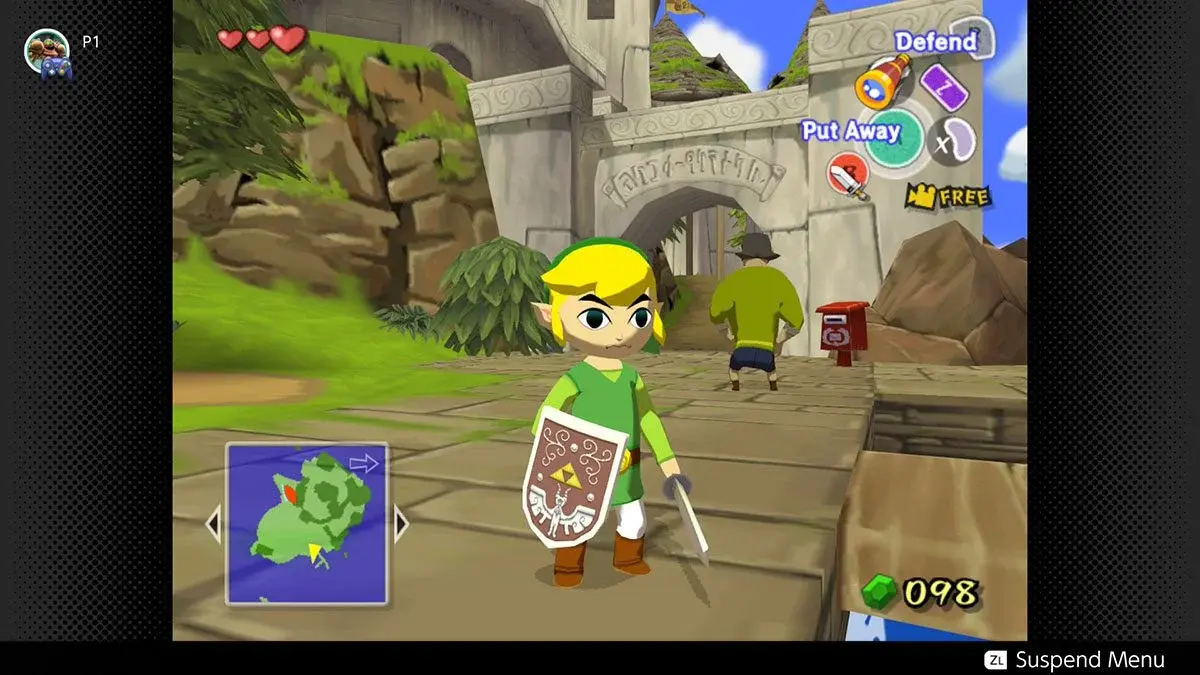
The final addition to Switch Online is the highly anticipated introduction of GameCube games. Running at higher resolutions, these hold up remarkably well, and the few games that originally had widescreen support allow 16:9 to be toggled – I suspect that’s why F-Zero GX and Soulcalibur II are the launch games, along with The Legend of Zelda: The Wind Waker at a 4:3 aspect ratio. Unfortunately not many first-party GameCube games had native widescreen support, so there’s not a great deal to come.
We can anticipate that new GameCube games will be drip-fed onto the service over the next seven or eight years. Given the lack of single-player focused Switch 2 games, it’s a shame there are only three GameCube launch games – with two of them more suited to multiplayer.
At least double that would have been nice, with Super Mario Sunshine an obvious contender given it’s already playable, but not purchasable, on the system. A couple of GameCube launch titles, like Luigi’s Mansion and Star Wars Rogue Squadron II: Rogue Leader, would have gone a long way to driving nostalgia for those of us there for the purple ‘Cube’s arrival, and helped the GCN Switch Online app appear less barren.
Nintendo Switch 2 is still the leader of handheld gaming
The Nintendo Switch 2 doesn’t reinvent the hybrid handheld-console, but it doesn’t need to, and this is Nintendo’s best direct successor to a previous system since the SNES. It gives us exactly what we wanted; a more powerful Switch that delivers a handheld-console experience like only Nintendo can – with a clear name that lives up to its promise.
The Switch 2 is more powerful and premium than we expected, as we enter a new era for Nintendo. It strikes the perfect balance between performance, design, usability and value. At $700 AUD ($450 USD), it’s priced fairly for what it delivers; especially for those outside the US, where the PS5 and Xbox Series X have both had two mid-gen price increases and are now pushing $830 AUD.
Still, it’s not cheap, and at launch the real hook is a better way to play your existing Switch games. For families who don’t need the latest and greatest, now would be a great time to buy an original Switch, which remains a viable option with plenty of cross-gen games to come.
The new games are on the way and for those who want the best experience for Nintendo exclusives, with a more premium handheld-console hybrid, the Switch 2 is well worth the upgrade. With competitors threatening to kick-off the handheld wars, Nintendo reminds us it’s still the king of portable and hybrid gaming with the Switch 2.
A Switch 2 was provided to Stevivor by Nintendo Australia for the purposes of this review and future game coverage.
This article may contain affiliate links, meaning we could earn a small commission if you click-through and make a purchase. Stevivor is an independent outlet and our journalism is in no way influenced by any advertiser or commercial initiative.

